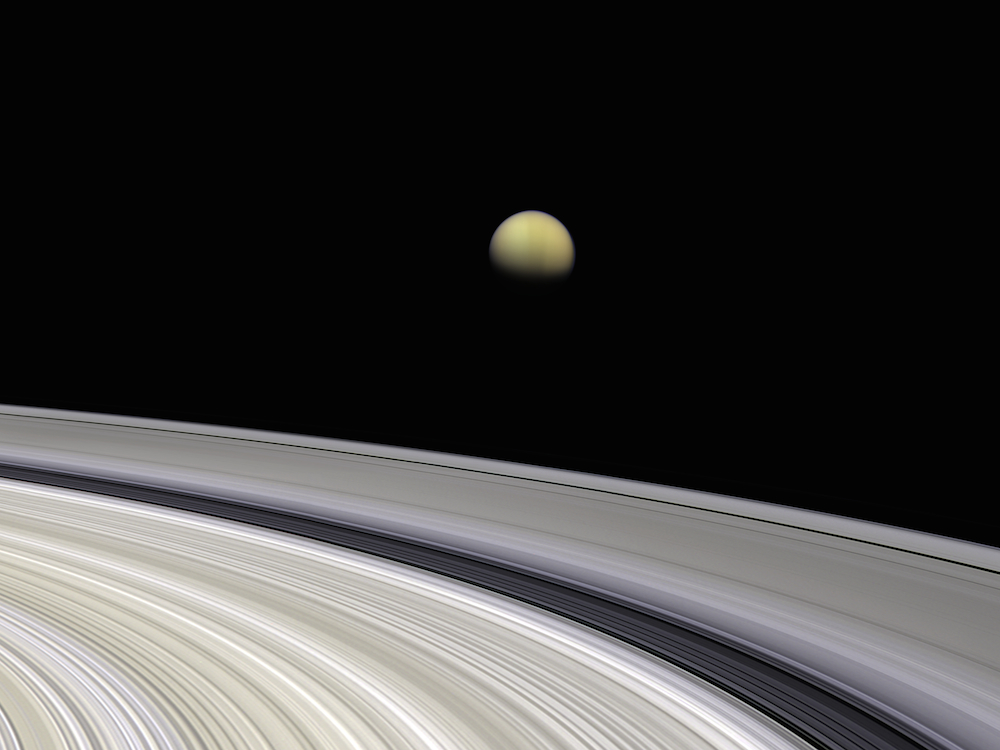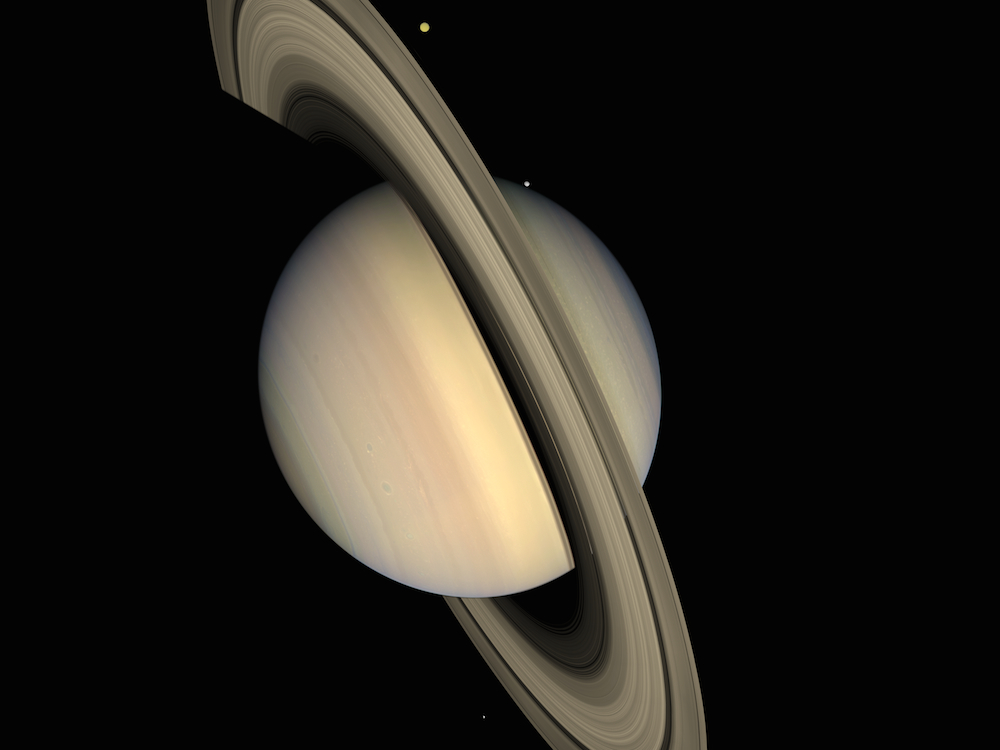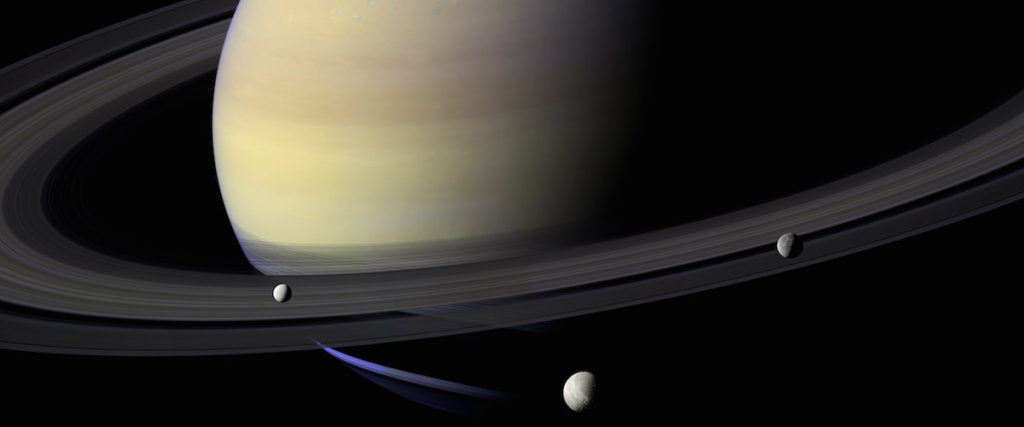Many of us wanted to be astronauts when we were kids, but very few of us actually became one. Filmmaker Stephen van Vuuren wants to make our childhood dreams of space exploration a reality.
Stephen and a team of dedicated volunteers are producing the hyper-realistic IMAX film In Saturn’s Rings, using millions of photographs captured by NASA spacecraft and astronomers around the world.
“We’re not going to get to fly into space, unfortunately,” he says. “This is our stand-in. And this is as close as you can get.”
Stephen is a self-described “ubergeek,” obsessed with astronomy. When NASA’s Cassini spacecraft swung by Saturn in 2004, he was stunned. Most of the rest of the world, however, wasn’t as impressed. “Cassini was returning these gorgeous images from Saturn, and I really felt like they weren’t getting the attention they deserved,” he says. “I kept thinking there had to be a way to get more people interested, to make them into some kind of film project.”

The idea stayed lodged in his mind until he saw the documentary The Kid Stays in the Picture, about legendary Paramount producer Robert Evans. Evans had refused to be filmed for the documentary, so the crew used still images, voice recordings, and Adobe After Effects to produce the film. “They called it a 2.5D effect, a parallax effect using masks and motion,” he says. “I saw that and also thought about Disney animators using multiplane animation cameras. It took four years to figure it all out, but I knew how I could make the Cassini images into a film.”
To achieve his vision, the filmmaker would build a virtual multiplane camera in After Effects, putting Cassini images on different layers and then animating them to create a sense of motion. It’s an old technique, taken to the extreme in this case. He is using thousands of photographs from the Cassini mission and millions from other NASA and astronomy databases online, and he has created a virtual multiplane camera on an astronomical scale to precisely reproduce motion.
“The workflow is all Adobe,” Stephen says. “It starts with raw photographic data, then Bridge, then Photoshop, and t
It may sound straightforward, but it’s quite complicated. For Cassini images, volunteers process raw binary image data from Cassini’s camera in Photoshop. They fuse three separate black-and-white images (one each for the red, green, and blue color channels) into one color image; then they stitch multiple images together into vast mosaics. “The mosaics have to be aligned by hand,” says Stephen. “We’re dealing with a moving camera and objects in space that are moving. There’s no way it can be automated.”

Hundreds of volunteers have come together to work on the project. And after thousands of hours of work, Stephen has a vast collection of high-resolution photographs suitable for manipulation in After Effects. But that’s just for the foreground images. Background images have been culled, in part, from the Sloan Digital Sky Survey—more than 5.5 million, in fact. Stephen pulled all the images into Bridge, where he painstakingly removed exposure artifacts and other visual dross. It took him seven months.
And the attention to detail didn’t stop there. Stephen’s team wrote custom Java and Javascript to pull location info from the Sloan survey database. Using a lot of math, the team was able to accurately position background galaxies and stars. “We’re building a photographic model of the universe in After Effects,” says Stephen. “It’s exactly what you would see if you were out there flying through it yourself.”
The scope of the project is staggering. In addition to 250,000 Photoshop files and 7.5 million photographs, In Saturn’s Rings consists of about 20,000 After Effects projects. Altogether, the project makes up three quarters of a petabyte of data.
“We’re all motivated by this desire to share these amazing photographs of space and earth with people,” he says. “That’s why we’re making this film for the giant screen. When you see it at that scale, it’s an experience. When you’re looking at a planet or moon or galaxy, and it entirely fills your field of view top and bottom and all your peripheral vision…you get the sense of what it might be like to actually be there.”
For news and updates, visit the In Saturn’s Rings website.
hen on to After Effects for assembly.” Preview and editing is handled in Adobe Premiere Pro.
